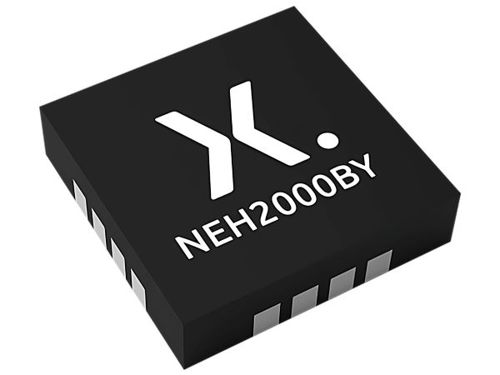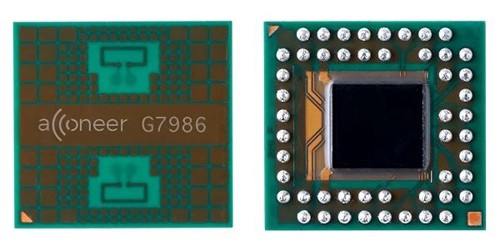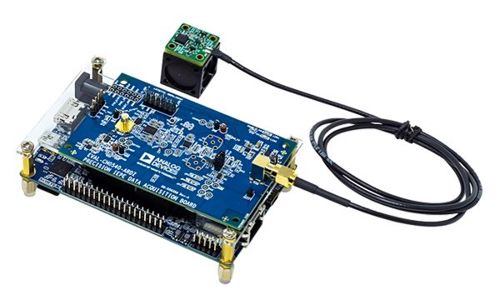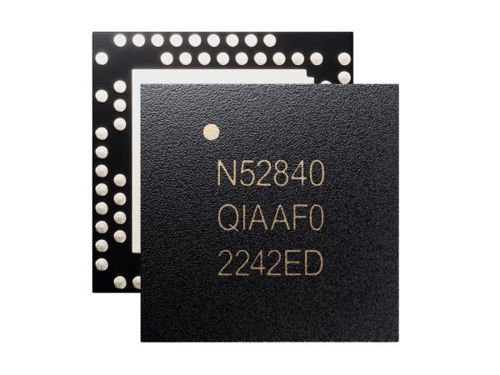The combined effort of these iterative improvements can be important in helping us move towards a more sustainable industrial complex.
The electronics industry plays an important role in developing solutions, improving efficiency, and reducing waste or unnecessary maintenance and here we look at five state-of-the-art solutions that engineers can use to create more sustainable end-products by refining power generation, development, sensing, maintenance, and communication.
With over 15 billion Internet of Things (IoT) devices, reusable power storage solutions combined with more efficient charging techniques can help to increase the sustainability factor of the IoT market.
The NEH2000BYJ from Nexperia is a high-performance power management integrated circuit (PMIC) harvesting between 0.035 to 2mW of sustainable power from photo-voltaic (PV) cells. The advanced maximum power point tracking (MPPT) controller uses an embedded hill-climbing algorithm for optimal power delivery and is compatible with any harvester that meets the specifications of the chip, allowing for broad component selection.

Figure 1: Nexperia NEH2000BY PMIC
Compact, the packaging has been minimised while the PMIC features a lower bill-of-materials (BOM) compared to similar options on the market with no external inductor and only a few accompanying passive components needed, further reducing system material requirements. When combined with a PV cell and lithium battery, it allows products to move away from single use batteries or fixed power supplies to rechargeable sources powered by ambient energy.
Development
According to one EU-funded project, by 2025 a staggering 78 million batteries used for IoT devices will be thrown away every day if we don’t improve the lifespan of the batteries. In response, Qoitech has sort to improve battery life and selection as well as increase design efficiency through deeper system development.
The Otii Arc Pro from Qoitech is an all-in-one energy optimisation tool and powerful software suite that provides engineers with a highly accurate power profiler, DC energy analyser, power supply, digital multimeter, source measure unit, and power debugger. It features a 5nA current measurement resolution, a 24-bit analogue-to-digital converter (ADC) with automatic switching between ranges, and a sampling rate up to 4ksps, ensuring precise data capture.
With the Otii Arc Pro and its sophisticated software, engineers can bring added intelligence and depth to their development processes while minimising the time spent developing solutions, helping to improve designs through the greater optimisation of battery management and system power consumption. The Otii Arc Pro allows for quick and accurate battery selection, battery life calculations, and reduction in overall power through real-world component consumption analysis. The result is the ability to reduce device energy consumption and ensure batteries are used for as long as possible, reducing waste.
Sensors
As robotics and automation expand, more solutions require precise spatial sensing. From passenger cars and factory robotics to lawn mowers and robot vacuums, countless products across the world need spatial awareness and can benefit from lower-energy sensing solutions.
Providing the market with highly efficient mmWave radar sensing is the A121 pulsed coherent radar from Acconeer. Using Acconeer’s patented pulsed coherent radar (PCR) technology, the high-precision 60Ghz radar delivers picosecond time resolution and works at ranges up to 20m. While precise radar sensing and ultra-low power consumption are usually mutually exclusive, Acconeer’s highly optimised design delivers on both.

Figure 2: Acconeer A121 pulsed coherent radar
The A121 comes in a compact 5.2 x 5.5mm package, integrating the baseband, RF front-end, and antenna to reduce the BOM. This packaging also allows for simple system incorporation into any portable battery driven design, while the operating current - which is in the micro or nano ampere range depending on measurement profile - prolongs battery life and reduces system energy consumption for a wide range of low-power applications.
Maintenance
With over 40 percent of the world’s electricity being consumed by electric motors, ensuring they are correctly maintained and running optimally is critical for helping ongoing sustainability efforts.
One solution is the CN0549 Condition Based Monitoring (CbM) Development Platform from Analog Devices. Using wide-bandwidth microelectronic mechanical systems (MEMS) accelerometer data output in the popular integrated electronic piezoelectric (IEPE) standard, the CN0549 allows for the intelligent collection and analysis of electric motor vibrations and harmonic frequencies.

Figure 3: Analog Devices CN0549 CbM Development Platform.
When combined with machine learning (ML) systems from high-performance data acquisition (DAQ) systems such as MATLAB, large datasets captured by the CN0549 can be used to create powerful CbM algorithms capable of detecting poor running conditions in electric motors earlier than traditional maintenance techniques. This can help increase the strength of preventative maintenance operations, ensuring that electric motors are always running as efficiently as possible. Earlier maintenance intervention can also reduce the risk of serious failure, further reducing material waste by removing the need to replace damaged components.
Communication
With the continued push for intelligence and connectivity across electronic products, an ever-increasing number of devices are fitted with communication modules that provide connection to wider networks and cloud services. Effectively managing wireless communication can help to drastically reduce a product’s standby and operational energy consumption.
The nRF52840 multi-protocol system-on-chip (SoC) from Nordic Semiconductor is an ultra-low-power, highly flexible single chip solution ideal for short-range wireless applications. The SoC features 2.4GHz Bluetooth 5.4, Bluetooth Low Energy, 802.15.4, Thread, Zigbee, and ANT/ANT+ concurrent connectivity.

Figure 4: Nordic Semiconductor nRF52840 multi-protocol SoC
The nRF52840’s sophisticated on-chip adaptive power management system features automated and adaptive power management functions to provide exceptionally low energy consumption. These functions cover all aspects of device operation, from power supply switching and peripheral bus and memory management to the automated shutdown feature that switches off all but the absolute essential peripherals required to perform a task. In the default low-power sub-mode, current draw is just 1.5µA, while standby draw is just 0.4µA.
With the nRF52840, engineers can produce designs capable of reliably connecting to a wide range of wireless protocols at a lower power budget than before.
Conclusion
Increasing sustainability is not just a single significant action, it can also be the combination of thousands of smaller changes that come together to form a greater net change. Through smarter component selection, deeper development and intelligent maintenance techniques, the electronics industry can work to reduce energy consumption, as well as lower raw material requirement through greater integration, maintenance schedules, and miniaturised designs.
The sustainability ‘heroes’ highlighted here are a diverse range of products and solutions that can provide improvement through both significant innovation and through continued iterative improvement.
Such components and systems can be used by engineers today to help improve the sustainability of future designs.
Author details: Mark Patrick, Mouser Electronics
Main image: The Qoitech Otii Arc Pro













